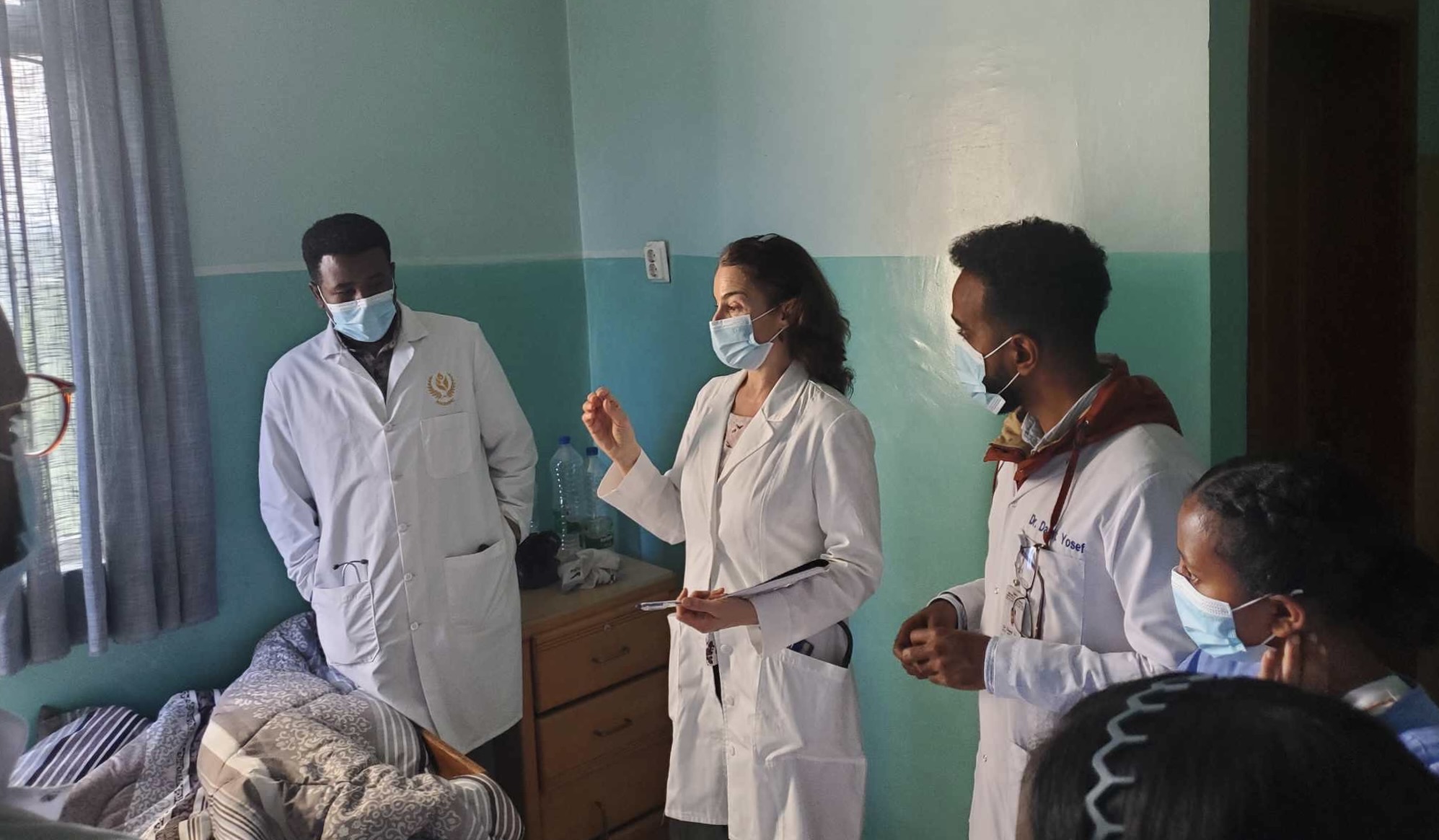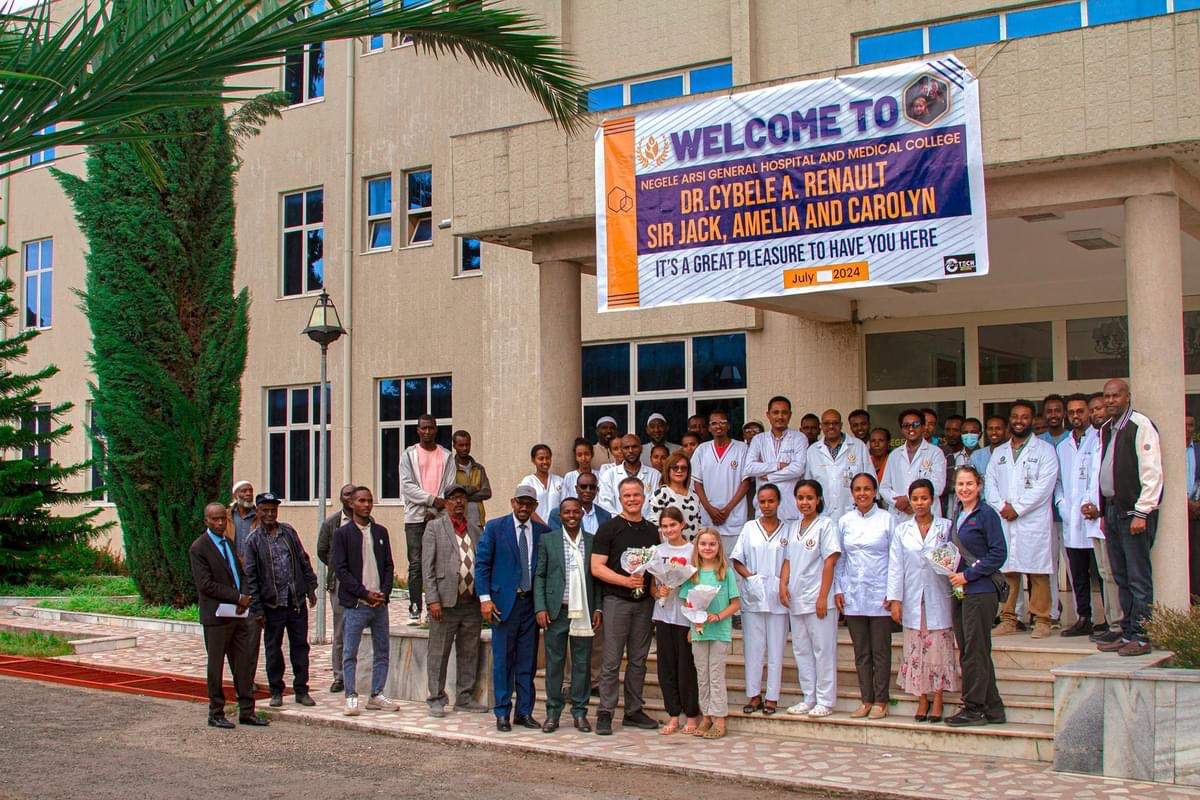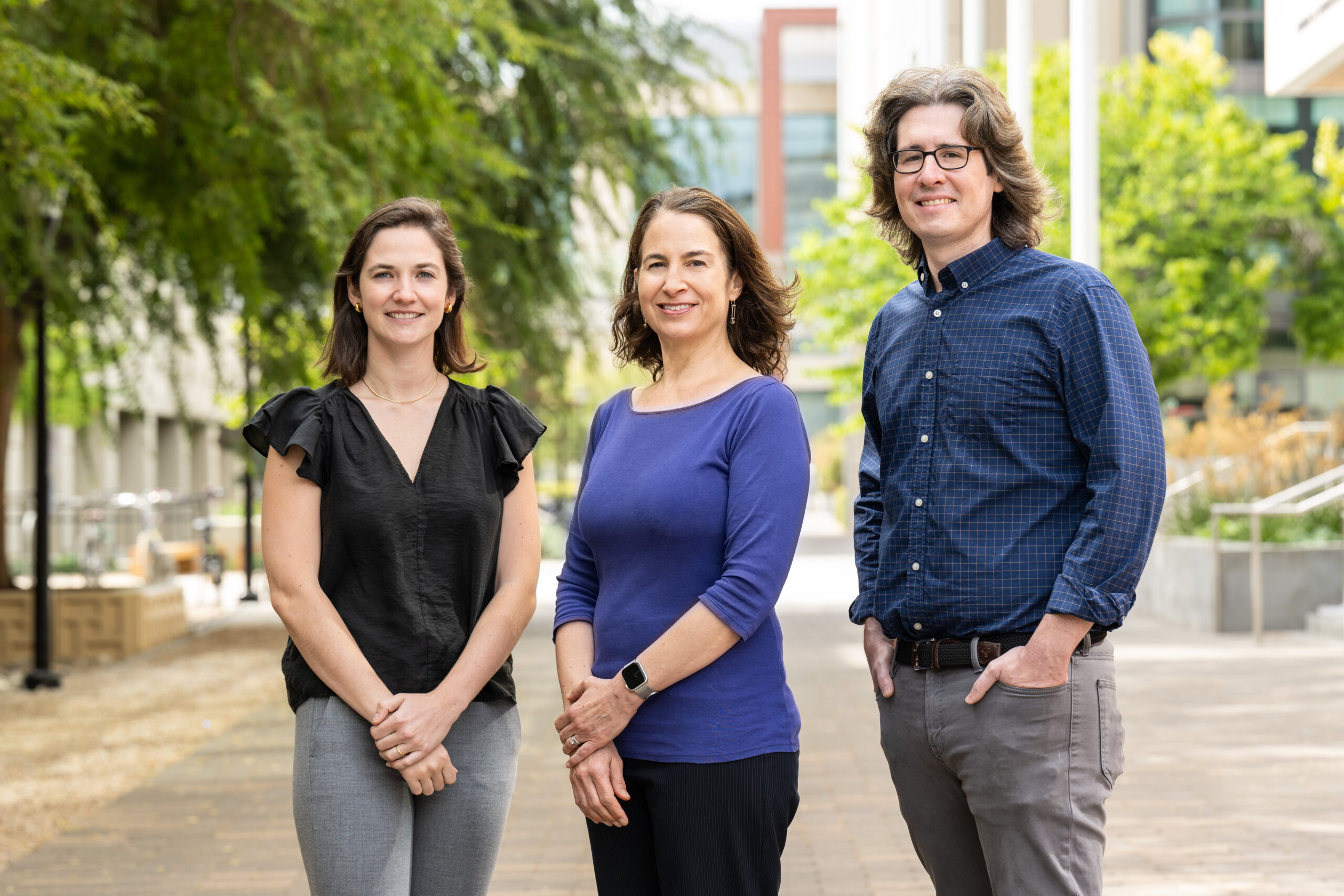
Knowledge Without Borders: Collab With Ethiopian Medical School Awakens Stanford Residents to Global Possibilities
#Partnerships
Stanford physician Cybele Renault, MD, rounds and teaches on the wards with the attentive internal medicine faculty at Negele Arsi General Hospital.
Imagine starting a virtual education program at a site without reliable internet in an environment where the basic medical tools we take for granted in the U.S. are scarce or unavailable. That is exactly what Cybele Renault, MD, has done. Her infectious passion for both medical education and program development has led to a Stanford collaboration with a medical school in rural Ethiopia that offers a uniquely rewarding educational opportunity for everyone.
In 2019, Renault was forever changed following a site visit to Negele Arsi General Hospital and Medical College (NAGHMC) that was sponsored by Stanford’s Center for Innovation in Global Health (CIGH), where she is a faculty fellow. Negele Arsi, located a four-hour drive from the country’s capital of Addis Ababa, is a small city in rural Ethiopia nestled within the state of Oromia.
The potential for an educational collaboration with her Stanford Internal Medicine Global Health Track residents was immediately obvious. Historically, Stanford Medicine residents have contributed to global health via onsite clinical service and teaching.

On the arrival of Cybele Renault, MD, to Negele Arsi, the faculty of NAGHMC give a warm welcome to Dr. Renault and her family with a ceremony that includes banners, bouquets of flowers, and a cake.

Savannah Karmen-Tuohy, Cybele Renault, Nick Zehner
After delays due to COVID-19 followed by political instability in the northern Tigray region, Renault adapted this plan to monthly two-hour virtual case-based clinical reasoning sessions, for which NAGHMC medical students congregate on the medical school campus where the internet might last the duration.
Bidirectional Learning
Renault led the first session, but then her Global Health Track residents took the lead, with Natasha Mehta, MD, MS, the first to take the plunge. “It fascinates me how we can adapt and train learners side-by-side in very different contexts and in very different countries,” Mehta says. “[This program is] a perfect example of how you can leverage an international collaboration to make people stronger physicians and clinicians. Bidirectional learning [is something] a lot of us are really interested in furthering in global health. If we can keep these connections going past these two-hour sessions every month and form a true network of learners, I think that could be extremely impactful.”
Mehta recently graduated from her residency program and has moved on to Duke University, where she intends to co-lead the program alongside Renault, her residency mentor.
Universal Enthusiasm
Another Global Health Track resident, Savannah Karmen-Tuohy, MD, has found the NAGHMC medical students inspirational. “The enthusiasm with which they do their pre-work and how prepared they are … is truly unparalleled,” she says. They are learning and working in the absence of much of the technology taken for granted in the U.S. Forget CT scans and other expensive diagnostic technology; they don’t even have reliable or affordable internet access. “We are adjusting each session as we go and have a debrief call before and after with members of the NGO and the on-site faculty to think about how to work best during these sessions. That’s exciting from an educator’s perspective.”
The enthusiasm is as bidirectional as the learning. In a letter of thanks to Stanford University, the participating NAGHMC students wrote, “These lectures have been invaluable in expanding our knowledge and understanding of various medical conditions and their treatment. The case studies presented in these lectures have provided us with a deeper insight into the practical aspects of medicine and have equipped us with the necessary skills to approach similar cases in a clinical setting. The real-life scenarios discussed have helped us develop critical thinking and problem-solving abilities that are essential for a successful medical career. The expertise and professionalism of the instructors who have conducted these lectures are truly commendable.”

“It’s incredible to see how the rewards of this initiative have prompted our residents to reflect on what they ultimately want to do and the impact they could have in their careers.”
– Cybele Renault, MD
Stanford resident Savannah Karmen-Tuohy, MD, leads a virtual clinical reasoning session with the NAGHMC medical students.
A Model for Future Educational Collaboration
A third participating Stanford resident, Nick Zehner, MD, MS, sees this collaboration as a scalable model for global education. “It takes advantage of technology that wasn’t as widespread before the pandemic, so we are on the cutting edge of a new way to transfer knowledge and education,” he says. He hopes this program can help in the development of best practices to replicate it all over the globe.
He also appreciates its nonpaternalistic approach. “One of the liabilities of global health is this colonial legacy of the haves giving to the have-nots,” he says. “But we probably get as much out of these sessions as the students. It takes so much dedication for the Ethiopian students to reach the point of becoming medical students. These students are on top of things. … I think that makes us better educators.”
Renault is effusive in her praise of the residents working with her. “It’s incredible to see how the rewards of this initiative have prompted our residents to reflect on what they ultimately want to do and the impact they could have in their careers,” she says.
In return, Renault’s Stanford residents cannot say enough good things about her leadership or the NAGHMC initiative. In July of 2024, Renault returned to Ethiopia to advance the initiative by meeting with the leadership and the students, familiarizing herself with the curriculum, and teaching in-person classes in infectious diseases for medical students and NAGHMC faculty.
Specialty Care Services Available Through Virtual Consults
In addition to its native population, Oromia is home to 100,000 internally displaced refugees. The region has limited access to health care and medical education. A decent standard of living for a family in the region is estimated to cost just $238 USD monthly, yet 90% of the population live below the poverty line.
NAGHMC was founded by Ethiopia Health Aid, an NGO co-founded in 2007 by Gudata Hinika, MD, an Ethiopian trauma surgeon who grew up in Oromia, and Katreena Salgado, an expert in public affairs and communication who is originally from the Philippines. Both founders are currently working at California Hospital Medical Center in Southern California.
